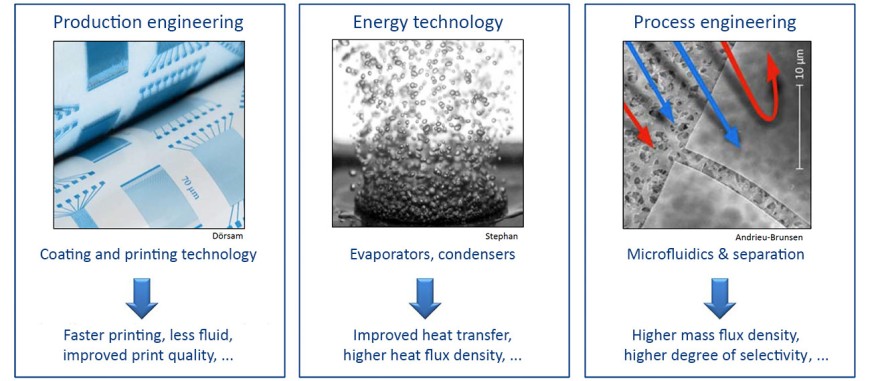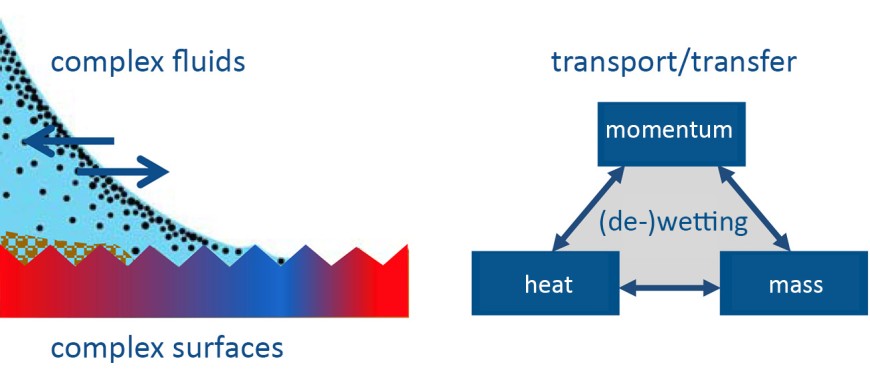Application areas
Frequently the wetting and dewetting phenomena are closely coupled to the transport of momentum, energy (heat) or mass occurring in close proximity to the advancing or receding three-phase contact line (liquid/gas/solid). Typically, the determining physical phenomena involved are restricted to a very small region around the contact line, at the nano- or microscale. Nevertheless, these phenomena often determine the overall effectiveness and efficiency of the entire technology or production, occurring at much larger macroscales.
Overarching questions
The fundamental mechanisms involved in the interaction between wetting and transport processes are in many respects not yet understood. To date research in this area has focused on the dependence of the wetting process on the local fluid velocity at the contact line, i.e. wetting coupled with momentum transport.
However serious deficits exist in our understanding when, parallel to momentum transport, also heat and mass transport are involved, as is the case in almost all of the above-mentioned applications. These deficits become even more blatant when complex fluids are involved, e.g. suspensions or mixtures, or when complex surfaces are examined, e.g. rough or porous.
The intention of the CRC is to successively address and remove these very relevant knowledge deficits. To achieve this goal the fundamental processes and phenomena involved must be examined over a wide range of length scales (nano-micro-macro) and the transfer of basic research to applications must be ensured. This necessitates the use of very diverse methods and expertise from very different disciplines.





